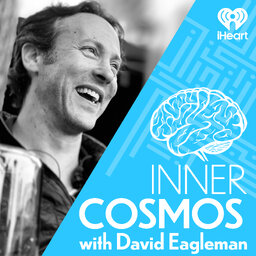Ep89 "Why do you love some flavors and not others?"
Why do you like the taste of things that your friend doesn't? Why do kids not like coffee but adults do? What does any of this have to do with smelling people’s armpits, whether women really synchronize their menstruation, whether your culture eats a lot of spicy foods, and how animals sense the world? Join Eagleman this week to understand why there's no accounting for taste.
 Inner Cosmos with David Eagleman
Inner Cosmos with David Eagleman


